Health
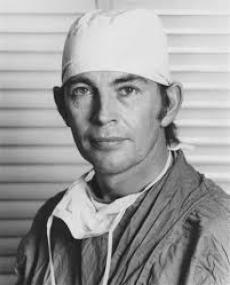 For a heart surgeon, there comes a point with a heart, when the diseased part is bad enough that it can’t be fixed. No matter how hard he tries, it is going to take a miracle to save the owner of that heart. That was the place that Dr Christiaan Neethling Barnard was facing in November 1967. His patient, 54-year-old Louis Washkansky was…well, dying, with little hope of survival. Heart transplants weren’t done every day like they are these days, and Barnard had told Mr and Mrs Washkansky that the operation had an 80% chance of success, an assessment which has been criticized as misleading, but by the same token, Mr Washkansky had no chance of survival without the transplant. Then, the opportunity presented itself, in the form of accident victim, Denise Darvall.
For a heart surgeon, there comes a point with a heart, when the diseased part is bad enough that it can’t be fixed. No matter how hard he tries, it is going to take a miracle to save the owner of that heart. That was the place that Dr Christiaan Neethling Barnard was facing in November 1967. His patient, 54-year-old Louis Washkansky was…well, dying, with little hope of survival. Heart transplants weren’t done every day like they are these days, and Barnard had told Mr and Mrs Washkansky that the operation had an 80% chance of success, an assessment which has been criticized as misleading, but by the same token, Mr Washkansky had no chance of survival without the transplant. Then, the opportunity presented itself, in the form of accident victim, Denise Darvall.
The time had come, and on December 3, 1967, Darvall’s heart was transplanted by Dr Bernard into Washkansky. As with any new procedure, there were the inevitable risks, and while Washkansky regained full consciousness and was able to talk easily with his wife, he developed pneumonia eighteen days later and because of his compromised immune system, due largely to the anti-rejection drugs, he died eighteen days later of pneumonia, largely brought on by the anti-rejection drugs that suppressed his immune system. Dr Bernard could have given up, but he did not. His second heart transplant patient, Philip Blaiberg received his new heart in 1968, and while his life after that was not long, he did live another year and a half. Of course, these days, the heart transplant patient has a much better prognosis because of how much medical procedures have improved.
Born in Beaufort West, Cape Province, South Africa, on November 8, 1922, Bernard studied medicine and practiced for several years in his native South Africa. As a young doctor, he experimented on dogs, which I suppose might make some people angry. Nevertheless, Barnard developed a remedy for the infant defect of intestinal atresia. Intestinal atresia refers to a part of the fetal bowel that is not developed, and the intestinal tract becomes partially or completely blocked (bowel obstruction). His technique saved the lives of ten babies in Cape Town and was adopted by surgeons in Britain and the United States.
In 1955, Bernard decided to travel to the United States to further his studies. He was initially assigned further 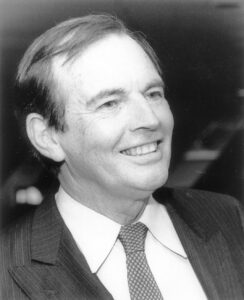 gastrointestinal work by Owen Harding Wangensteen at the University of Minnesota. Then, Bernard was introduced to the heart-lung machine, and was allowed to transfer to the service run by open heart surgery pioneer Walt Lillehei. After his study abroad, he returned to South Africa in 1958. Barnard was appointed head of the Department of Experimental Surgery at the Groote Schuur Hospital in Cape Town. After a long and successful career, Bernard retired as head of the Department of Cardiothoracic Surgery in Cape Town in 1983 after rheumatoid arthritis in his hands ended his surgical career. Still, he could not leave surgery completely alone. He became interested in anti-aging research, and in 1986 his reputation suffered when he promoted Glycel, an expensive “anti-aging” skin cream, whose approval was withdrawn by the United States Food and Drug Administration soon thereafter. During his remaining years, he established the Christiaan Barnard Foundation, which was dedicated to helping underprivileged children throughout the world. He died on September 2, 2001 at the age of 78 in Paphos, Cyprus after an asthma attack.
gastrointestinal work by Owen Harding Wangensteen at the University of Minnesota. Then, Bernard was introduced to the heart-lung machine, and was allowed to transfer to the service run by open heart surgery pioneer Walt Lillehei. After his study abroad, he returned to South Africa in 1958. Barnard was appointed head of the Department of Experimental Surgery at the Groote Schuur Hospital in Cape Town. After a long and successful career, Bernard retired as head of the Department of Cardiothoracic Surgery in Cape Town in 1983 after rheumatoid arthritis in his hands ended his surgical career. Still, he could not leave surgery completely alone. He became interested in anti-aging research, and in 1986 his reputation suffered when he promoted Glycel, an expensive “anti-aging” skin cream, whose approval was withdrawn by the United States Food and Drug Administration soon thereafter. During his remaining years, he established the Christiaan Barnard Foundation, which was dedicated to helping underprivileged children throughout the world. He died on September 2, 2001 at the age of 78 in Paphos, Cyprus after an asthma attack.
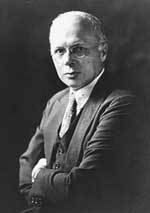 Modern medicine has come a long way through the advances of a number of people, one of the greatest being Richard Lewisohn. Born July 12, 1875, in Hamburg, Germany, Lewisohn studied medicine at the University of Freiburg, which is still one of the most prestigious medical schools in Europe. He obtained his medical degree in 1899, and in 1906, he immigrated to New York. Lewisohn’s initial interest was in the digestive system (gastroenterology). He began his work at Mount Sinai Hospital, but, it ended up being his work with blood transfusions that made him the medical hero he was.
Modern medicine has come a long way through the advances of a number of people, one of the greatest being Richard Lewisohn. Born July 12, 1875, in Hamburg, Germany, Lewisohn studied medicine at the University of Freiburg, which is still one of the most prestigious medical schools in Europe. He obtained his medical degree in 1899, and in 1906, he immigrated to New York. Lewisohn’s initial interest was in the digestive system (gastroenterology). He began his work at Mount Sinai Hospital, but, it ended up being his work with blood transfusions that made him the medical hero he was.
The blood is a complicated matter, and the study of the blood, or rather the experimentational use of the blood, often ended with tragic, and even fatal results. Of course, much of the problem came from having no understanding, or even any knowledge of blood types. The discovery of blood types didn’t come about until 1901, when Karl Landsteiner discovered that blood consisted of different types. Some types were compatible and could be transfused, leading to healing, but other types coagulated when mixed and would kill you. It was an amazing discovery, but Landsteiner’s discovery did not change medicine overnight. Doctors still faced the the fact that when blood was removed to transfuse into another person, it quickly clotted, making it unusable. That led to a direct method of transfusion, crazy in and of itself, in which doctors would sew the veins and arteries of the donor and the recipient together. Maybe it worked, but it just wasn’t practical. Not only did you have to have a donor with the correct type on hand, but the physician didn’t know how much blood was being pumped into the patient, or out  of the donor, for that matter. They needed a way to have blood on hand, and in measurable containers, all without having to deal with spoilage.
of the donor, for that matter. They needed a way to have blood on hand, and in measurable containers, all without having to deal with spoilage.
In April 1914, a Belgian physician named Albert Hustin, proved that sodium citrate could be used as an anticoagulant in diluted blood. Lewisohn immediately jumped upon this insight and set up detailed experiments using sodium citrate and dog blood. Through Lewisohn’s experiments transfusing dogs, he was able to determine the exact concentration of sodium citrate that was both safe and effective for blood transfusions. He was also able to keep the extracted blood viable for two days prior to transfusion. More study would eventually increase that timeframe up to 14 days.
This was exactly what the world needed…blood could be stored, and made available as needed. Lewisohn’s work led to the storage of blood in blood banks. It is a discovery that is credited with saving over 1 billion lives to date. Lewisohn’s discovery, occurring at the time of World War I, as well as his findings concerning blood storage for transfusions was used as a method to save the lives of wounded soldiers. Use of blood transfusions 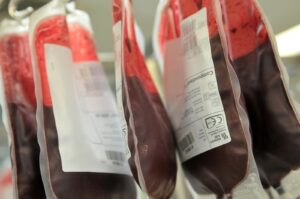 expanded after the war. By the 1930s Blood Banks became common in cities worldwide, making blood transfusions the most important lifesaving medical advance in history.
expanded after the war. By the 1930s Blood Banks became common in cities worldwide, making blood transfusions the most important lifesaving medical advance in history.
In 1955 Lewisohn received the American Association of Blood Banks’ Karl Landsteiner Memorial Award. In January 1959 he became an honorary fellow of the Royal College of Surgeons of England, having been a fellow of the American College of Surgeons since 1916. Lewisohn was also a Fellow of the American Gastroenterological Association, and served on the American Board of Surgery. He passed away (probably of natural causes, but I cannot confirm that) on August 11, 1961 in New York City. He was 86 years old.
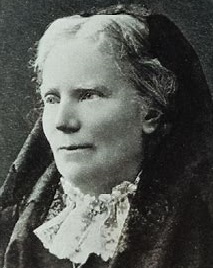 In the mid-1800s, it was unheard of for a woman to be a doctor. They were barely allowed to be a nurse, although they were somehow expected to be able to do all the “nursing” duties for their own family. Elizabeth Blackwell was born February 3, 1821 and she was about to change things forever. She first became a physician in England, and then she became the first woman to receive a medical degree in the United States, and the first woman on the Medical Register of the General Medical Council. I’m not a big “women’s libber,” but sometimes women need to decide what they want to do in life, and go for it. Elizabeth Blackwell played an important role in both the United States and the United Kingdom as a social awareness and moral reformer. She promoted education for women in medicine.
In the mid-1800s, it was unheard of for a woman to be a doctor. They were barely allowed to be a nurse, although they were somehow expected to be able to do all the “nursing” duties for their own family. Elizabeth Blackwell was born February 3, 1821 and she was about to change things forever. She first became a physician in England, and then she became the first woman to receive a medical degree in the United States, and the first woman on the Medical Register of the General Medical Council. I’m not a big “women’s libber,” but sometimes women need to decide what they want to do in life, and go for it. Elizabeth Blackwell played an important role in both the United States and the United Kingdom as a social awareness and moral reformer. She promoted education for women in medicine.
Strangely, Blackwell was not interested in a career in medicine at first. In fact, when her schoolteacher brought in a bull’s eye to use as a teaching tool, Blackwell found that she didn’t feel so well. So, initially, she became a schoolteacher in order to support her family. Teaching school was one of the few “acceptable” occupations for women during the 1800s. Unfortunately for her, she hates every minute of teaching, but she found that medicine and medical subjects did interest her.
Her interest in medicine began after a friend fell ill and told her that, if a female doctor had cared for her, she 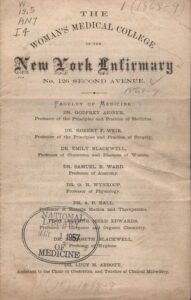 might not have suffered so much. Blackwell decided then and there that she would go to medical school. She began applying to medical schools and immediately found out that there was a prejudice against women students of medicine. In fact, there was no such thing, and the school and other students intended to keep it that way. That prejudice against her gender would persist throughout her career, but it did not stop her.
might not have suffered so much. Blackwell decided then and there that she would go to medical school. She began applying to medical schools and immediately found out that there was a prejudice against women students of medicine. In fact, there was no such thing, and the school and other students intended to keep it that way. That prejudice against her gender would persist throughout her career, but it did not stop her.
She was rejected from every medical school she applied to, except Geneva Medical College, currently known as State University of New York Upstate Medical University. Amazingly, her acceptance came after the male students voted for her acceptance. And so it was that in 1847, Elizabeth Blackwell became the first woman to attend medical school in the United States. Her inaugural thesis on typhoid fever was published in 1849 in the Buffalo Medical Journal, shortly after she graduated. It was the first medical article ever published that had been written by a woman female student from the United States. In what was considered a perspective that was deemed by the medical community as feminine, the thesis “portrayed a strong sense of empathy and sensitivity to human suffering, as well as strong advocacy for economic and social justice.”
In 1857, Elizabeth Blackwell founded the New York Infirmary for Women and Children with her sister Emily Blackwell, and began giving lectures to female audiences on the importance of educating girls. She also played a significant role during the American Civil War by organizing nurses. Her contributions remain celebrated with the Elizabeth Blackwell Medal, which is awarded annually to a woman who has made significant contribution to 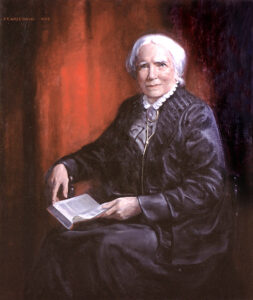 the promotion of women in medicine. Blackwell remained active even into her later years. In 1895, she published her autobiography, Pioneer Work in Opening the Medical Profession to Women. It was not very successful, selling less than 500 copies. After this publication, Blackwell slowly relinquished her public reform presence, and spent more time traveling. She visited the United States in 1906 and took her first and last car ride.
the promotion of women in medicine. Blackwell remained active even into her later years. In 1895, she published her autobiography, Pioneer Work in Opening the Medical Profession to Women. It was not very successful, selling less than 500 copies. After this publication, Blackwell slowly relinquished her public reform presence, and spent more time traveling. She visited the United States in 1906 and took her first and last car ride.
While holidaying in Kilmun, Scotland in 1907, Blackwell fell down a flight of stairs, and was left almost completely mentally and physically disabled. On May 31, 1910, she died at her home in Hastings, Sussex, after suffering a stroke that paralyzed half her body. Her ashes were buried in the graveyard of Saint Munn’s Parish Church, Kilmun, and obituaries honoring her appeared in publications such as The Lancet and The British Medical Journal.
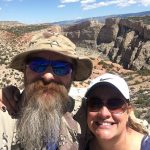

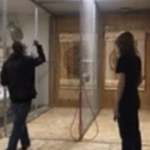 This has been an interesting year for my nephew, Steve Moore. Steve enjoys doing things with his hands, and on March 5, 2021, he managed to get twisted up in the lathe. It happened to be the same day his father-in-law, LJ Cook was having back surgery, and the day his uncle, Ron Schulenberg was visiting, so thankfully there was someone there to help. things could have turned out much worse for Steve, but he got out of it just in time before it did more damage. Steve had to go through occupational therapy to repair the torn muscles. His hand will take a while to get back to where it was, but he has his hand and the use of it, and that is a huge blessing.
This has been an interesting year for my nephew, Steve Moore. Steve enjoys doing things with his hands, and on March 5, 2021, he managed to get twisted up in the lathe. It happened to be the same day his father-in-law, LJ Cook was having back surgery, and the day his uncle, Ron Schulenberg was visiting, so thankfully there was someone there to help. things could have turned out much worse for Steve, but he got out of it just in time before it did more damage. Steve had to go through occupational therapy to repair the torn muscles. His hand will take a while to get back to where it was, but he has his hand and the use of it, and that is a huge blessing.
Steve was still recovering, when his company held their “late” Christmas party (lots of late Christmas parties this past year). They had decided to go to a place in Cody (Steve lives in Powell, Wyoming) called Cody Firearms Experience. Apparently they couldn’t have picked a better place, because everyone thought this place was very cool. Cody Firearms Experience offers practice ranges for shooting any gun, and they would have had Steve at that point for sure, but you can throw axes/tomahawks!! They give lessons, if you need them. Steve and his wife, my niece, Machelle Moore went back a couple times and that’s all it took. Steve is hooked. Steve and Machelle love to go camping, and so tomahawk throwing has become a part of the camping experience. He has gotten really good by practicing at camp and in their back yard.
In a normal year, Steve can be found helping his father-in-law and anyone else who needs help, cutting firewood, or just about whatever else is needed, but right now, he can’t stand any vibration on his hand. He even has a hard time running the weed eater, but he does get that done in their yard. That said, he had to take the summer off from trying to help his father-in-law get firewood for the winter. LJ found a guy that brought him some wood for the winter. It was already cut and split, so that was nice. Steve plans to work hard this winter to get his had back in shape for next summer. He is hoping he will be confident enough next summer to run the chainsaw. The chainsaw takes strength and hand control, so time will tell.
In the meantime, Steve has picked up the new hobby of throwing knives and tomahawks. His boys, Weston and Easton Moore love it too. It has been something that is a lot of fun for Steve and the boys to “bond” over. Then his work supervisor had a buddy that supplied them with some wood to throw in. They made some really nice targets. Since Weston lives in Butte, Montana now, Easton has had more time throwing, because he still lives at home. Steve even got the neighbor into throwing tomahawks. Then the neighbor brought over old kitchen knives to try. That didn’t work too well. They all ended up breaking. I guess kitchen knives weren’t designed for throwing at a wooden target. Steve ordered the good knives, and now they have knives to throw that don’t break. They are made of muck heavier metal. The tomahawks they used are hand forged, hand made out of Ohio…which prompted me to suggest that Steve needs a forge of his own. Machelle likes the idea, so I expect to see that going on in the future.
Steve and his family have been hiking in the Big Horn Mountains for twenty years, and going part way up one hill most of that time. They just love the area. This summer they hiked up higher up the hill than they had ever gone before and came across a replica (similar anyway) to the famous “Medicine Wheel” that is up there. They really like the are, because of the dark red dirt. They were hiking a different route, and ended up going to the top on the back side. As they were headed back to the truck, they found this wheel. When they got out the 
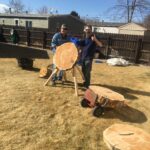
 compass, they found that, sure enough, the lines are exact north, south, east and west. They felt like they had found a real gem. Steve and Machelle love being out in the mountains, so I wouldn’t be surprised if they find the other wheels they have heard are out there. Today is Steve’s birthday. Happy birthday Steve!! Have a great day!! We love you!!
compass, they found that, sure enough, the lines are exact north, south, east and west. They felt like they had found a real gem. Steve and Machelle love being out in the mountains, so I wouldn’t be surprised if they find the other wheels they have heard are out there. Today is Steve’s birthday. Happy birthday Steve!! Have a great day!! We love you!!

 Recently, I ran across an article about drug use in among the Nazi regime. The article really caught my attention, because in many ways drug use among the Nazis made sense. The things they did to people would have been much easier if they were under the influence of drugs…mostly because they would be less likely to remember what they had done, and if they remembered, they would be less likely to care about what they had done. Drugs tend to dull the senses, and in many cases that makes the person relaxed and calm, but there are some drugs that make the person violent too. The article started out saying, “‘You can learn a lot about a culture from its drug use.’ Robert McAlmon, an American author living in Berlin during the tumultuous Weimar years, marveled that ‘dope, mostly cocaine, was to be had in profusion’ at ‘dreary night clubs’ where ‘poverty-stricken boys and girls of good German families sold it, and took it.’”
Recently, I ran across an article about drug use in among the Nazi regime. The article really caught my attention, because in many ways drug use among the Nazis made sense. The things they did to people would have been much easier if they were under the influence of drugs…mostly because they would be less likely to remember what they had done, and if they remembered, they would be less likely to care about what they had done. Drugs tend to dull the senses, and in many cases that makes the person relaxed and calm, but there are some drugs that make the person violent too. The article started out saying, “‘You can learn a lot about a culture from its drug use.’ Robert McAlmon, an American author living in Berlin during the tumultuous Weimar years, marveled that ‘dope, mostly cocaine, was to be had in profusion’ at ‘dreary night clubs’ where ‘poverty-stricken boys and girls of good German families sold it, and took it.’”
Over the years, a number of drugs have been banned, due to the danger of their use, the reactions of those taking them, or just that they are now deemed illegal. Cocaine was banned in 1924, but that has not really stopped it’s use. Like most drugs, if there is a “market” for it, someone will find a way to get the drug to the “customer.” Meth has become so easy to make and uses common (but poisonous) ingredients, so it has become the drug of choice for many drug addicts today. Some prescription drugs are addictive, and have become a part of the drug trafficking world too. Drugs like Opioids and Morphine are fairly easy to obtain from a doctor, because they hare used for many injuries and common ailments. Then they become addicted, and when they can no longer get a prescription for those drugs, they move on to illegal drugs.
Strangely, when the Nazis rose to power, illegal drug consumption actually fell. The Nazis regarded drugs as “toxic” to the German body. Drug users were given prison sentences, and addicts were classed…along with Jews, gypsies and homosexuals…as undesirable social elements. By the end of the 1930s, the Nazi pharmaceutical companies had turned away from opioids and cocaine, and moved towards synthetic stimulants. These could be produced entirely within Germany, per Nazi directive, of course. More money in the pocket of Hitler’s regime. “The transition from cabaret cocaine to over-the-counter meth helped fuel what German journalist Norman Ohler in his new book Blitzed: Drugs in the Third Reich calls the ‘developing performance society’ of the early Nazi era, and primed Germany for the war to come.”
I’m sure that the Third Reich, while calling it “developing performance society,” knew that the the use of these drugs was going to make the people taking the drugs more compliant to the government. Once a person is addicted to a drug, many will do anything to get a “fix,” including theft, robbery, breaking and entering, selling themselves, and even begging to get more. In 1937, the German pharmaceutical company called Temmler-Werke introduced Pervitin, which was a methamphetamine-based stimulant. The formula was developed by Dr Fritz Hauschild. He went on to pioneer East Germany’s sports doping program. Within a few months, this variant of crystal meth was available without a prescription, and was even sold in boxed chocolates. It was also widely adopted by people from all walks of life to elevate mood, control weight gain, and increase productivity. Pervitin’s success as an over-the-counter “wonder drug” caused a rebound in the country’s economic status after the war. The country came out of an economic depression to nearly full employment. Marketing for Pervitin claimed it would help “integrate shirkers, malingerers, defeatists, and whiners” into the rapidly expanding workforce. Students took it to cram for exams, while housewives took it to stave off depression. Pervitin use was so common that it became a normal part of life in the early Third Reich. For the military personnel of Hitler’s army, the chemical was a great weapon to fight the so-called “war on exhaustion.” The troops started relying on the “tank chocolate” to keep them alert for days on end. Before long, Nazi medical 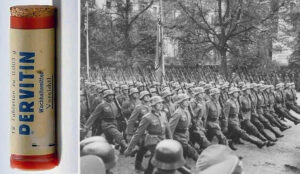 officials became increasingly aware of Pervitin’s risk factor. The tests performed on soldiers found that critical thinking skills declined the longer they stayed awake, even if the short-term gains were appealing enough. Even after drug sales to the general public were restricted in April 1940, the German Army High Command issued the so-called “stimulant decree,” ordering Temmler to produce 35 million tablets for military use. Of course, we know now that methamphetamine use is not only dangerous, but often deadly. The addictive effects alone can ruin lives. I don’t suppose Hitler cared much about that, as long as his troops obeyed his commands. I wonder how many men lost their lives because of the drug.
officials became increasingly aware of Pervitin’s risk factor. The tests performed on soldiers found that critical thinking skills declined the longer they stayed awake, even if the short-term gains were appealing enough. Even after drug sales to the general public were restricted in April 1940, the German Army High Command issued the so-called “stimulant decree,” ordering Temmler to produce 35 million tablets for military use. Of course, we know now that methamphetamine use is not only dangerous, but often deadly. The addictive effects alone can ruin lives. I don’t suppose Hitler cared much about that, as long as his troops obeyed his commands. I wonder how many men lost their lives because of the drug.

 Life isn’t always easy, and it doesn’t always go the way we thought it would go. Even spending many good years together, doesn’t guaranty that we will have many more. For Pearl Hein, who loved her husband Eddie Hein so much, the end came far too soon, but in a loving marriage, the end always comes too soon. No matter how many years you have been together. Then, it is up to the one left behind, to go forward, because their spouse would want them to continue living. Such was the case with Eddie. He wanted Pearl to live on.
Life isn’t always easy, and it doesn’t always go the way we thought it would go. Even spending many good years together, doesn’t guaranty that we will have many more. For Pearl Hein, who loved her husband Eddie Hein so much, the end came far too soon, but in a loving marriage, the end always comes too soon. No matter how many years you have been together. Then, it is up to the one left behind, to go forward, because their spouse would want them to continue living. Such was the case with Eddie. He wanted Pearl to live on.
Since Eddie’s passing, Pearl has done a little traveling. With her daughter, Kim Arani and her husband, Michael living in Texas, Pearl has become a bit of a traveler…maybe not a world traveler, but a traveler nevertheless. I have been very happy that Pearl is spending time with Kim and Michael in Texas and their place in Florida. She really needed the time away from the cold weather in Forsyth, Montana where she lives, and after losing her son, Kim’s brother, Larry Hein too…just three months after his dad, things have been very sad for Pearl over the past
I know she had a lovely time visiting Kim and Michael, and I am so happy for them all. They needed The time together so they could begin to heal. One of the best ways to heal after a loss is to take the time to share the memories of the past. I’m sure Kim and Pearl did a lot of reminiscing during Pearl’s visit, and I’m sure it was a great healing process. I know that Eddie and Larry would both be very glad Pearl went to Texas. I know it was hard for her to move on alone, but it is what they would want her to do.
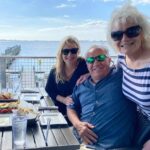
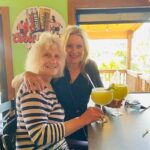
I remember watching the newer version of “Titanic” and when Rose survives the sinking, she goes on to live a full life, because Jack told her to live on. Life after loss is never easy, but it can be rewarding. People are meant to survive and to thrive. We are wired to grieve and to move forward with our lives. That doesn’t mean that it is an easy thing to do, but it is a necessary thing to do. I’m glad to see that Pearl is making that transition. Today is Aunt Pearl’s birthday. Happy birthday Pearl!! Have a great day!! We love you!!

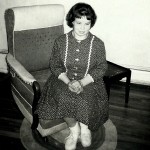 My sister-in-law, Marlyce Schulenberg lives only in our memories since her passing at the young age of 39, on August 13, 1989. Those were sad days leading up to and following her passing. The cancer stole so much from her. She was skin and bone by the time she died. Marlyce was developmentally disabled, and in most was she was an adult-kid. She loved candy. It was a vice she really had to have, and if that was the worst bad habit she had…well, that’s not bad. In the end, I suppose it was the extra weight she carried from the candy, that kept her alive as long as she hung on. Non-Hodgkin’s Lymphoma is a horrible disease. In Non-Hodgkin’s Lymphoma, white blood cells called lymphocytes grow abnormally and can form growths (tumors) throughout the body.in Marlyce, they tumor was in her esophagus, and she couldn’t swallow much. She ate baby food in the end.
My sister-in-law, Marlyce Schulenberg lives only in our memories since her passing at the young age of 39, on August 13, 1989. Those were sad days leading up to and following her passing. The cancer stole so much from her. She was skin and bone by the time she died. Marlyce was developmentally disabled, and in most was she was an adult-kid. She loved candy. It was a vice she really had to have, and if that was the worst bad habit she had…well, that’s not bad. In the end, I suppose it was the extra weight she carried from the candy, that kept her alive as long as she hung on. Non-Hodgkin’s Lymphoma is a horrible disease. In Non-Hodgkin’s Lymphoma, white blood cells called lymphocytes grow abnormally and can form growths (tumors) throughout the body.in Marlyce, they tumor was in her esophagus, and she couldn’t swallow much. She ate baby food in the end.
It was so sad, but I want to concentrate on the good memories. Marlyce worked at Wood’s School, which was for the handicapped at that time. They ran a laundry service there, and she worked in that laundry. She was so proud of her job. Marlyce was very dedicated to her job, and would go on sick, if need be. She was very proud of making money.
Marlyce was also a great baker of Chocolate Chip Cookies, and I loved them. They were the best I ever had…now or then. When we went out to the house to visit, I always hoped Marlyce had been baking. She made 
 other kinds of cookies too, but when I came in the door, I was always happiest when she said, “Caryn. I made Chocolate Chip Cookies!!”
other kinds of cookies too, but when I came in the door, I was always happiest when she said, “Caryn. I made Chocolate Chip Cookies!!”
Marlyce also made knitted stocking caps. She sold them at craft fairs, and they sold very well. These were talents that not every developmentally disabled person could do, but Marlyce excelled in those areas. I love the sweet memories of my sweet, gone-too-soon sister-in-law. Today would have been Marlyce’s 71st birthday. Happy birthday in Heaven, Marlyce. We love and miss you very much.
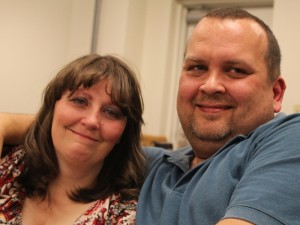
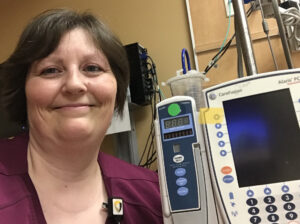 My daughter, Corrie Petersen is one of the hardest working people I know. She works full-time, and goes to nursing school full-time too. Anyone who has been in nursing school will tell you that it is not and easy, and it’s even harder if you work. Nevertheless, Corrie is determined, and she is so excited about the future. Every skill she achieves, every class she completes, and every semester that is behind her are cause for celebration. She loves the work she does and she really has a heart for it. I have spoken to friends she has taken care of, and they told me that she was so good to them. In fact they couldn’t wait to tell me that she took care of them, since she could not tell me due to privacy laws.
My daughter, Corrie Petersen is one of the hardest working people I know. She works full-time, and goes to nursing school full-time too. Anyone who has been in nursing school will tell you that it is not and easy, and it’s even harder if you work. Nevertheless, Corrie is determined, and she is so excited about the future. Every skill she achieves, every class she completes, and every semester that is behind her are cause for celebration. She loves the work she does and she really has a heart for it. I have spoken to friends she has taken care of, and they told me that she was so good to them. In fact they couldn’t wait to tell me that she took care of them, since she could not tell me due to privacy laws.
Corrie is an important member of the CNA staff at Wyoming Medical Center. CNAs are hard to find and harder still to keep, and many times she is the lone CNA on her floor. It’s a tough job, with lots of heavy lifting, and lots of work that many people feel is “beneath them,” but Corrie takes it all in stride. I know this because, while I’m not a nurse or a CNA, I was a caregiver for 14 years, and Corrie was a part of my team. She went on to continue the job of caregiving and then decided to become a nurse, starting by becoming a CNA, so she has been doing this job for more than 16 years. She did the work of a CNA, and even of a nurse, long before she had the title, and her four grandparents were grateful to her and the rest of the team for the care and comfort she and the rest of the team provided. Corrie did not go into the career of nursing blindly, like many people who decide on it right out of high school. Yes, some are sure of what they want to do, and follow through with great success, but others find that the work isn’t for them, and they soon move on to other careers.

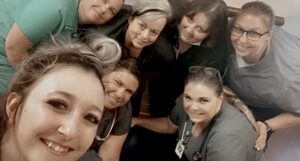 Becoming a nurse is no easy task, as any nurse will tell you. You have to stick to the plan, work and study hard, and never give up. If you don’t have “stick-to-it-iveness,” you won’t make it in this line of work…or in the schooling it takes to get into this line of work. I am very proud of all the hard work Corrie has done and continues to do to achieve her dream. Today is Corrie’s birthday. Happy birthday Corrie!! Have a great day!! We love you!!
Becoming a nurse is no easy task, as any nurse will tell you. You have to stick to the plan, work and study hard, and never give up. If you don’t have “stick-to-it-iveness,” you won’t make it in this line of work…or in the schooling it takes to get into this line of work. I am very proud of all the hard work Corrie has done and continues to do to achieve her dream. Today is Corrie’s birthday. Happy birthday Corrie!! Have a great day!! We love you!!

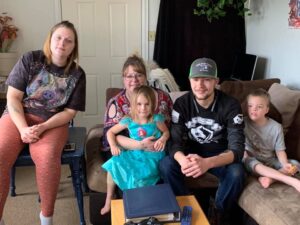 My niece Cassie Iverson is spending her first birthday without her mom. My sister-in-law, Rachel Schulenberg went to Heaven on January 19, 2021, after suffering a stroke. It’s been a hard year for Cassie so far, as anyone who has lost a parent can attest. Really that first whole year is the hardest. All the firsts without your parent. Cassie and her mom were just the two of them from the time her mom was 16 years old. They were so close. I could say that they were best friends, but they weren’t Rachel was the mom and Cassie was the daughter. They were closer than just friends could be. A person has enough friends, and can always make more, but a mother is a treasure, and you truly only get one.
My niece Cassie Iverson is spending her first birthday without her mom. My sister-in-law, Rachel Schulenberg went to Heaven on January 19, 2021, after suffering a stroke. It’s been a hard year for Cassie so far, as anyone who has lost a parent can attest. Really that first whole year is the hardest. All the firsts without your parent. Cassie and her mom were just the two of them from the time her mom was 16 years old. They were so close. I could say that they were best friends, but they weren’t Rachel was the mom and Cassie was the daughter. They were closer than just friends could be. A person has enough friends, and can always make more, but a mother is a treasure, and you truly only get one.
Life changed, as life does. Rachel got married and had two sons, Cassie’s half-brothers, Riley and Tucker. Then they divorced and Rachel was a single mom again. Just her and her kids. Cassie was older then, and she and her mom grew closer. Rachel watched as her beautiful daughter grew and found new interests. Sure, there were difficult times…teenaged years, sibling fights, and such, but Rachel loved her kids and they all knew that they were going to be ok.
When Cassie got married and had babies of her own, Rachel was so proud. She loved her grandchildren beyond measure. Rachel was also very proud of her only daughter. Cassie is a very talented photographer, and Rachel would often tell me about her photography trips. She was just so proud of Cassie. She was also so proud of the mother Cassie was. She watched as Cassie raised Lucas, who was born with Down Syndrome. Cassie became the best advocate for her son. Cassie is a real fighter when it comes to her children, Lucas and his little sister, Zoey, and that made Rachel so proud. She knew that Cassie would give her children the best life she possible could. Cassie learned about being a mom from the best…her own mom, Rachel.
Life without her mom will never be the same for Cassie…she will always miss her mom. It is impossible not to, but I hope she also knows just how proud her mother was of her. Often when we spoke on the phone, Rachel 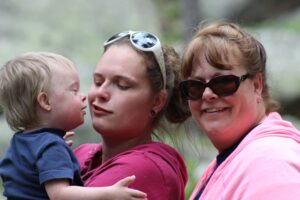
 would tell me, with pride in her voice, about the wonderful accomplishments of her daughter. Photography, kids, camping…another thing they both loved, and so much more. Cassie, your mom is in Heaven, but she is still watching over you, and she is still so proud of everything you have accomplished. I know this year is a tough one, but remember that she lives on in your heart. Today is Cassie’s birthday. Happy birthday Cassie!! Have a great day!! Your mom would want that for you. We love you!!
would tell me, with pride in her voice, about the wonderful accomplishments of her daughter. Photography, kids, camping…another thing they both loved, and so much more. Cassie, your mom is in Heaven, but she is still watching over you, and she is still so proud of everything you have accomplished. I know this year is a tough one, but remember that she lives on in your heart. Today is Cassie’s birthday. Happy birthday Cassie!! Have a great day!! Your mom would want that for you. We love you!!

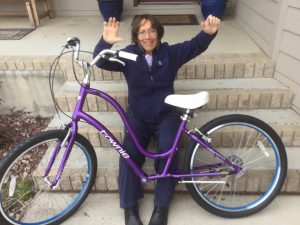 After ill health in multiple forms caught up with my sister-in-law, Brenda Schulenberg eight years ago, she set out on the journey that would forever change her life…getting healthy again, and staying that way. The journey was long and hard, but Brenda just kept plugging along, until one day, she found herself of the top of that hill, looking over at the lush green grass on the other side of the rainbow…so to speak. While the metaphor paints a beautiful picture, the real beauty of the picturesque journey Brenda took, as been the views seen from the seat of her bicycle. Brenda struggled with her weight all her life, and riding a bicycle wasn’t something she ever did very much, but when she finally got her weight down to a healthy level, she decided that she wanted to rider a bicycle. She bought a purple bicycle…yes it had to be purple, because Brenda is all about purple…and set out to discover the world of bicycle trails. She doesn’t go on the dirt trails that some people ride on, but there are so many nice paved trails her in Casper, Wyoming, as in many other places too, that she in never hard pressed to find a place to ride.
After ill health in multiple forms caught up with my sister-in-law, Brenda Schulenberg eight years ago, she set out on the journey that would forever change her life…getting healthy again, and staying that way. The journey was long and hard, but Brenda just kept plugging along, until one day, she found herself of the top of that hill, looking over at the lush green grass on the other side of the rainbow…so to speak. While the metaphor paints a beautiful picture, the real beauty of the picturesque journey Brenda took, as been the views seen from the seat of her bicycle. Brenda struggled with her weight all her life, and riding a bicycle wasn’t something she ever did very much, but when she finally got her weight down to a healthy level, she decided that she wanted to rider a bicycle. She bought a purple bicycle…yes it had to be purple, because Brenda is all about purple…and set out to discover the world of bicycle trails. She doesn’t go on the dirt trails that some people ride on, but there are so many nice paved trails her in Casper, Wyoming, as in many other places too, that she in never hard pressed to find a place to ride.
If I said that Brenda isn’t fanatical, I would be lying. She will get up at 3:30 in the morning just to be ready for 
 work with enough time to hit the trail for a sunrise bicycle ride, before heading into her job in Human Resources at Hilltop National Bank. Lunchtime rides are not out of the question either, if the weather permits. That topping of the hill just to see the other side, is really sort of a motto to Brenda. Brenda has many hilltops under her belt…and many in her future. Brenda has no intention of a backward slide in her health, in fact, she holds a yearly party to remind herself of just how far she has come, and to remind herself to keep plugging along, so she never goes back there again.
work with enough time to hit the trail for a sunrise bicycle ride, before heading into her job in Human Resources at Hilltop National Bank. Lunchtime rides are not out of the question either, if the weather permits. That topping of the hill just to see the other side, is really sort of a motto to Brenda. Brenda has many hilltops under her belt…and many in her future. Brenda has no intention of a backward slide in her health, in fact, she holds a yearly party to remind herself of just how far she has come, and to remind herself to keep plugging along, so she never goes back there again.
While there was a time when food was addictive for Brenda, she is always working to keep that kind of addiction at bay. These days, however, there is an addiction that Brenda still struggles with…shopping. Of course, she doesn’t consider that an addiction that bothers her. Brenda was never really able to buy new clothes, because there was only so much that she could wear, and that was downright depressing, so she shopped from a catalog. These days, however, stuff fits…cute stuff!! Brenda doesn’t have to worry about going 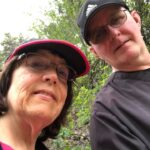
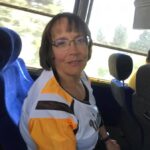 to her closet, hoping there is something in it that she can wear. She can wear all of it, and buying new stuff is fun!! Who wouldn’t want to go shopping? If Brenda finds herself going on a road trip, you might as well understand that there will be a mall in the mix. If you are going with her, you should be prepared to hit a few stores. I think her trips are as much planned around the stores and malls, as the city or town she is actually going to visit. From one fanaticism to another, but hey, this one’s healthy. Nothing wrong with a good shopping trip. Today is Brenda’s birthday. Happy birthday Brenda!! Have a great day!! We love you!!
to her closet, hoping there is something in it that she can wear. She can wear all of it, and buying new stuff is fun!! Who wouldn’t want to go shopping? If Brenda finds herself going on a road trip, you might as well understand that there will be a mall in the mix. If you are going with her, you should be prepared to hit a few stores. I think her trips are as much planned around the stores and malls, as the city or town she is actually going to visit. From one fanaticism to another, but hey, this one’s healthy. Nothing wrong with a good shopping trip. Today is Brenda’s birthday. Happy birthday Brenda!! Have a great day!! We love you!!

